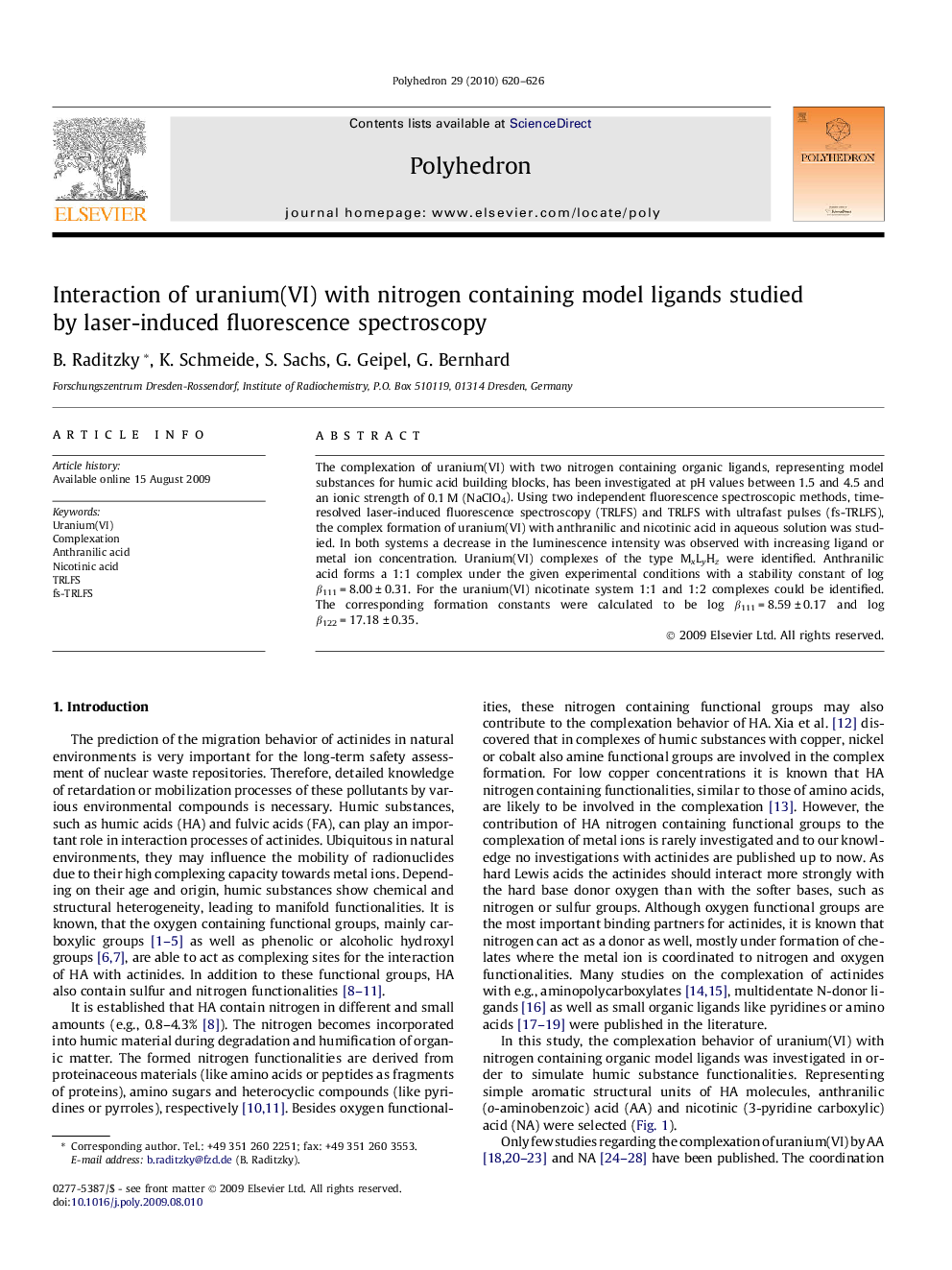| Article ID | Journal | Published Year | Pages | File Type |
|---|---|---|---|---|
| 1339554 | Polyhedron | 2010 | 7 Pages |
The complexation of uranium(VI) with two nitrogen containing organic ligands, representing model substances for humic acid building blocks, has been investigated at pH values between 1.5 and 4.5 and an ionic strength of 0.1 M (NaClO4). Using two independent fluorescence spectroscopic methods, time-resolved laser-induced fluorescence spectroscopy (TRLFS) and TRLFS with ultrafast pulses (fs-TRLFS), the complex formation of uranium(VI) with anthranilic and nicotinic acid in aqueous solution was studied. In both systems a decrease in the luminescence intensity was observed with increasing ligand or metal ion concentration. Uranium(VI) complexes of the type MxLyHz were identified. Anthranilic acid forms a 1:1 complex under the given experimental conditions with a stability constant of log β111 = 8.00 ± 0.31. For the uranium(VI) nicotinate system 1:1 and 1:2 complexes could be identified. The corresponding formation constants were calculated to be log β111 = 8.59 ± 0.17 and log β122 = 17.18 ± 0.35.
Graphical abstractThe complex formation of uranium(VI) with anthranilic and nicotinic acid has been studied using TRLFS. Complexes of the type MxLyHz were identified for both systems. The stability constants were determined to be log β111 = 8.00 ± 0.31 for uranium(VI) anthranilate and log β111 = 8.59 ± 0.17 and log β122 = 17.18 ± 0.35 for uranium(VI) nicotinate.Figure optionsDownload full-size imageDownload as PowerPoint slide
